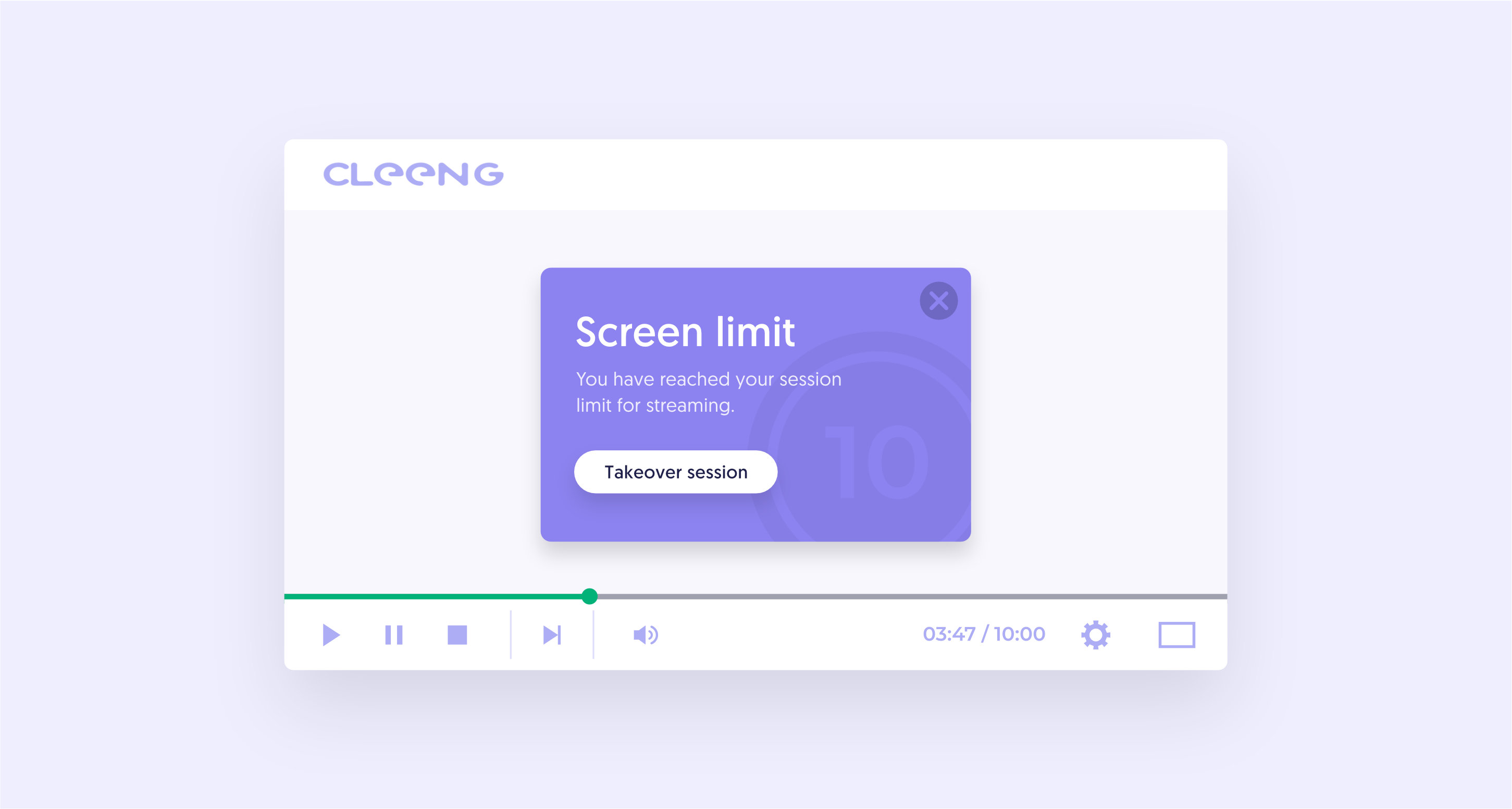
A recent industry survey found that 40% of people have shared account passwords for a streaming service. Now there’s a way to end this drag on your revenue growth.
In March of this year, Citi analyst Jason Bazinet reported that the widespread sharing of online passwords for SVOD services costs US companies about $25 billions dollars in revenue. Such is the scale of the problem, industry investors are now paying close attention to whether or not new services have built-in obstacles to this activity. The drag on growth is huge, with the Citi report estimating that 25% of a platform’s potential revenue is lost to account sharing.
That’s why Cleeng has developed DRISC (Dynamic real-time identification and session control). It allows any OTT broadcaster to have automated control of account sharing on their platform. By enabling session control, any active screens beyond what the broadcaster allows will be blocked. And because screen limits can be defined per plan, multi-person accounts can now be properly monetized with friends and family packages.
How widespread is account sharing on OTT platforms?
Early in the pandemic Vice reported that Gen Z was leading a new wave in online video piracy. However, as more research attention was turned to OTT audiences during the extended lockdowns of the past 18 months, it became very clear that this was not a single generation issue.
On the contrary, while 80% of teens and young adults claim to share passwords, this figure is as high as 47% across all generations. Variety reported last year that 51% of streaming account owners admitted to letting others use it.
Unfortunately, it seems like no sector is immune. Sport broadcasters naturally experience the biggest losses, particularly when they have exclusive broadcast rights and depend heavily on live events. The Netflix experience shows, however, that this is not a sports sector problem. Cultural content suffers equally, and perhaps even more so when it is niche, and is followed by close communities.
How Cleeng turns the tables on password sharing
A key dynamic in account sharing is that viewing patterns tend towards simultaneous access. This is obvious for sports broadcasters, but with Netflix accounting for a staggering 30-40% of downstream traffic during the peak hours of 8-10pm, it’s clear that in general viewers concentrate their viewing at very specific times.
This opens the door for solutions that focus on screen limits. Cleeng’s DRISC allows broadcasters to define, plan by plan, how many screens can be active at once. If a service allows just a single screen to be active, then any additional attempt to access content will either:
- be blocked
- end the currently active viewing session.
This puts the broadcaster in complete control. And while preventing account sharing is the primary goal, there is another major hidden benefit.
Using Multi-Screen plans to grow revenue
Session control provides two additional paths to revenue growth in OTT.
Firstly, multi-screen plans provide a means to set higher prices. If the single screen plan is $5.99 per month, then a multi-screen plan for $7.99 is attractive to consumers who prefer to have shared accounts with friends and family. This is a simple and effective way to grow customer lifetime value without creating content tiers.
Secondly, a Fetch study published in 2019 found that friends and family subscription plans are cancelled at a 65% lower rate than traditional single-user subscriptions. As more people must be involved in the cancellation decision, the decision to cancel becomes far less likely.
To learn more session control with Cleeng, just get in touch




